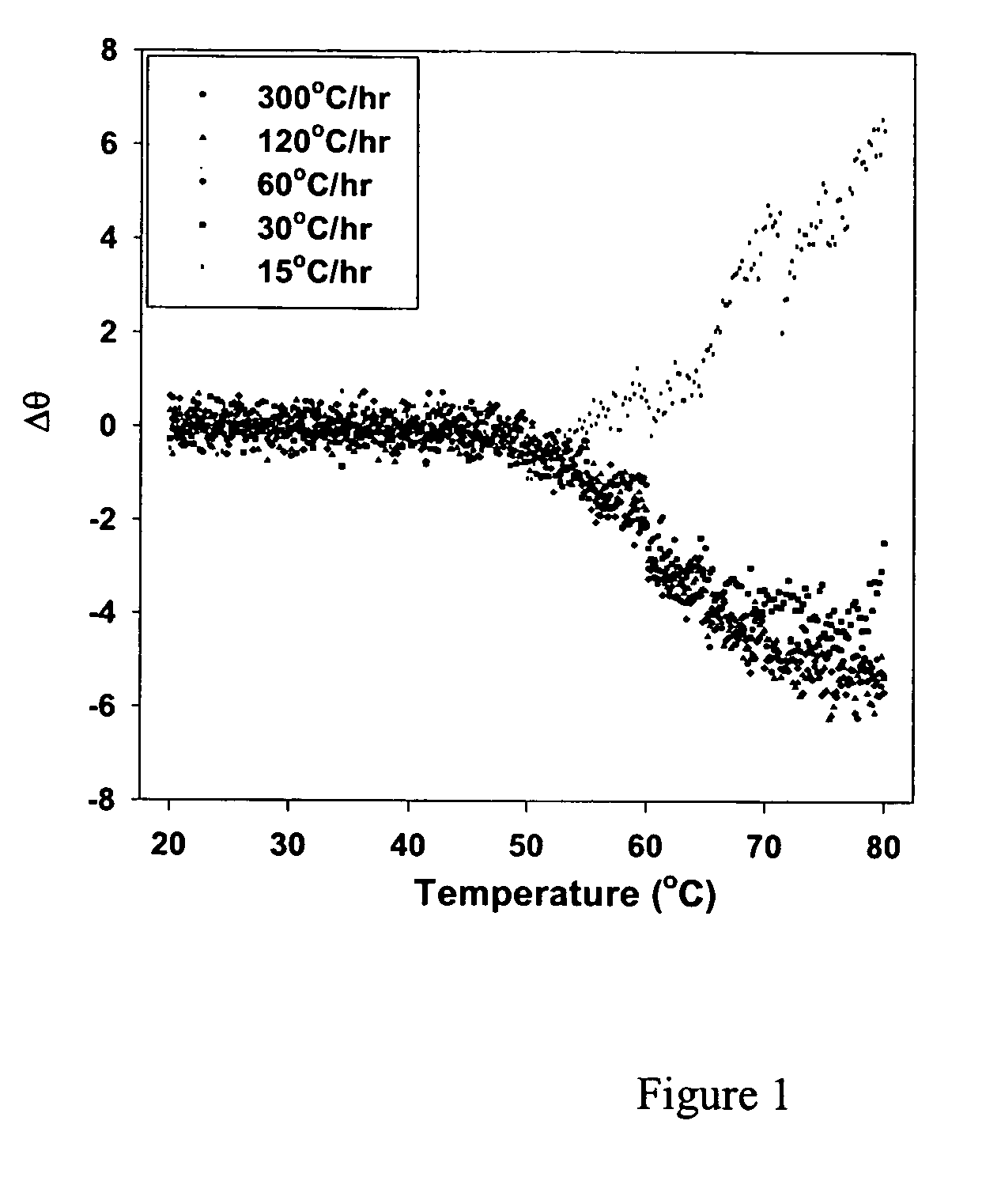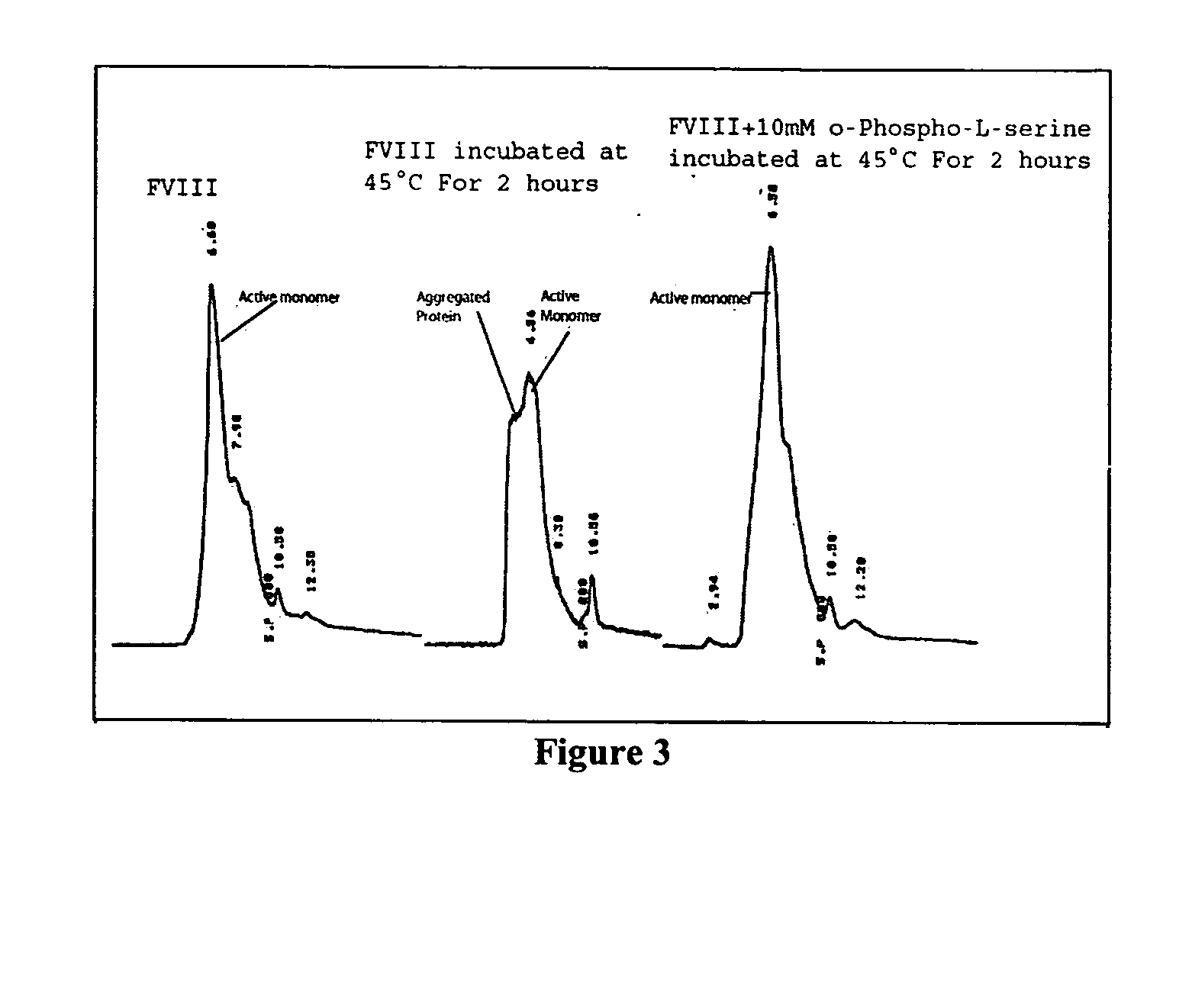Compositions and methods for less immunogenic protein formulations
a technology of immunogenic protein and composition, applied in the direction of peptide/protein ingredients, aerosol delivery, peptides, etc., can solve the problems of unfavorable cost-effective current treatment regimens to overcome the immune respons
- Summary
- Abstract
- Description
- Claims
- Application Information
AI Technical Summary
Problems solved by technology
Method used
Image
Examples
example 2
[0037] This example describes the stability of the protein-lipid complexes of the present invention (Example. 1). For free FVIII the unfolding of the protein results in the aggregation of the protein and this in turn leads to the irreversibility of unfolding. The aggregation is initiated by small conformational changes in C2 domain. The unfolding / refolding studies were carried out with free FVIII and FVIII complexed to PS as described in Example 1 to determine the stability of the formulation containing protein and O-Phospho-L-Serine that is believed to bind to the C2 domain of FVIII.
[0038] Circular Dichroism (CD), fluorescence anisotropy, size exclusion chromatography (SEC), domain specific antibody binding and clotting activity studies were carried out to investigate the temperature dependent physical and functional changes of recombinant human FVIII (rFVIII). Heating rate dependence of the unfolding profiles indicated that the thermal denaturation of the protein was at least in p...
example 3
[0041] This example demonstrates that the protein-lipid composition of the present invention (Example. 1) reduces the immunogenicity against the protein in Sprague-Dawley rats. To illustrate this embodiment, OPLS-Factor VIII complex was administered to Sprague-Dawley rats. This rat model has been shown to be suitable to study antibody development to FVIII. The antibody titer measured by ELISA for free FVIII and FVIII-PS complex. Two weeks after the administration, the analysis of antibody titer for Factor VIII -OPLS complex was found to be non-immunotoxic. The antibody titers for free FVIII is 563.72.+-.916.15 and no detectable antibody titers was observed for FVIII-OPLS complex.
example 4
[0042] This example demonstrates that the composition of the present invention can be made as small unilamellar vesicles. 0.3 mg / ml of DMPC and 0.15 mg / ml of bPS dissolved in a round bottomed flask and the solvent was evaporated to form a thin film. The film was then hydrated to form MLV's and the MLVs were extruded through 200 nm polycarbonate filters to form SUV's in the size range of 160 nm. The immune response of this formulation is described in FIG. 7 and 7b.
PUM
| Property | Measurement | Unit |
|---|---|---|
| Fraction | aaaaa | aaaaa |
| Fraction | aaaaa | aaaaa |
| Molar density | aaaaa | aaaaa |
Abstract
Description
Claims
Application Information
 Login to View More
Login to View More - R&D
- Intellectual Property
- Life Sciences
- Materials
- Tech Scout
- Unparalleled Data Quality
- Higher Quality Content
- 60% Fewer Hallucinations
Browse by: Latest US Patents, China's latest patents, Technical Efficacy Thesaurus, Application Domain, Technology Topic, Popular Technical Reports.
© 2025 PatSnap. All rights reserved.Legal|Privacy policy|Modern Slavery Act Transparency Statement|Sitemap|About US| Contact US: help@patsnap.com



